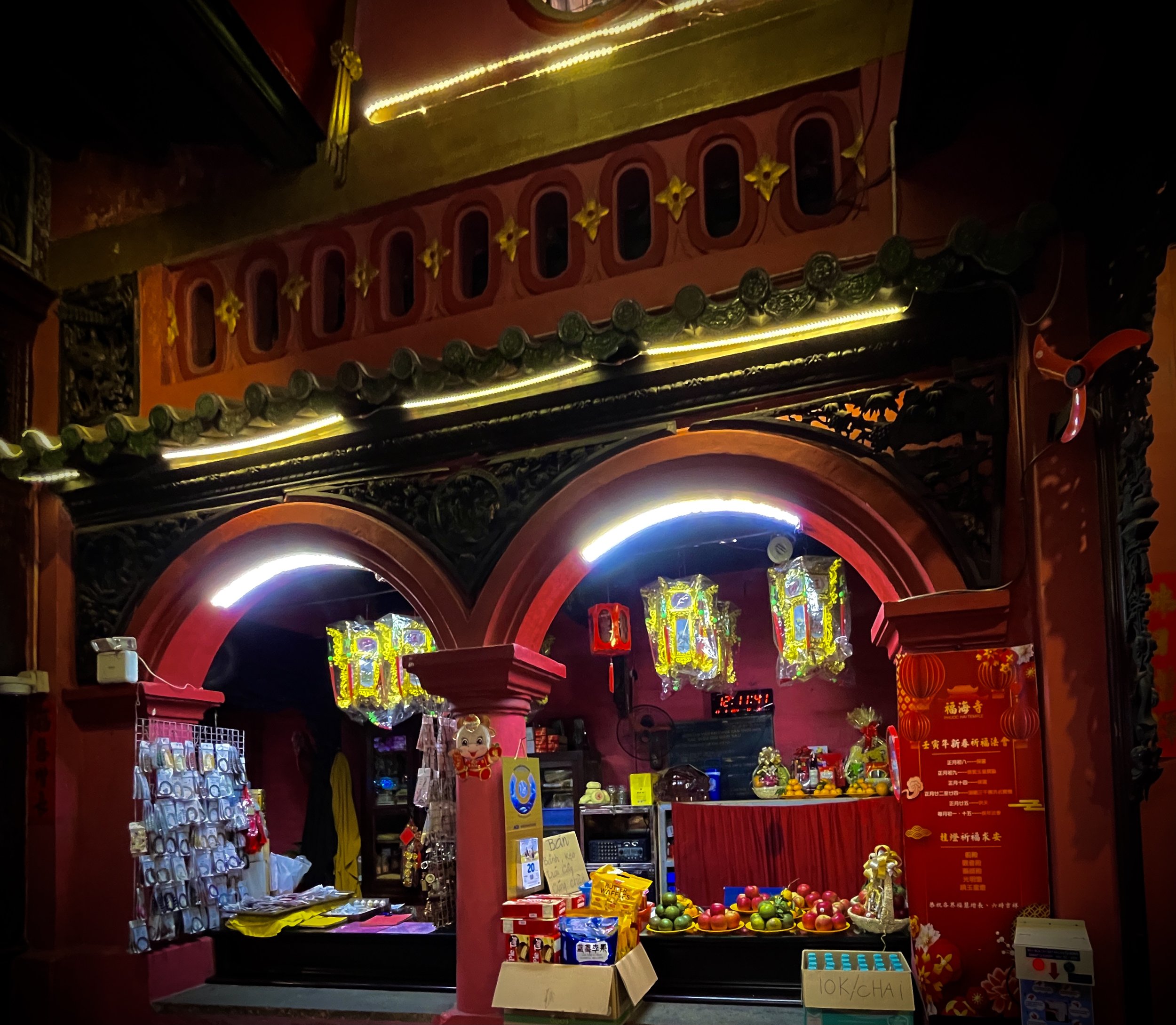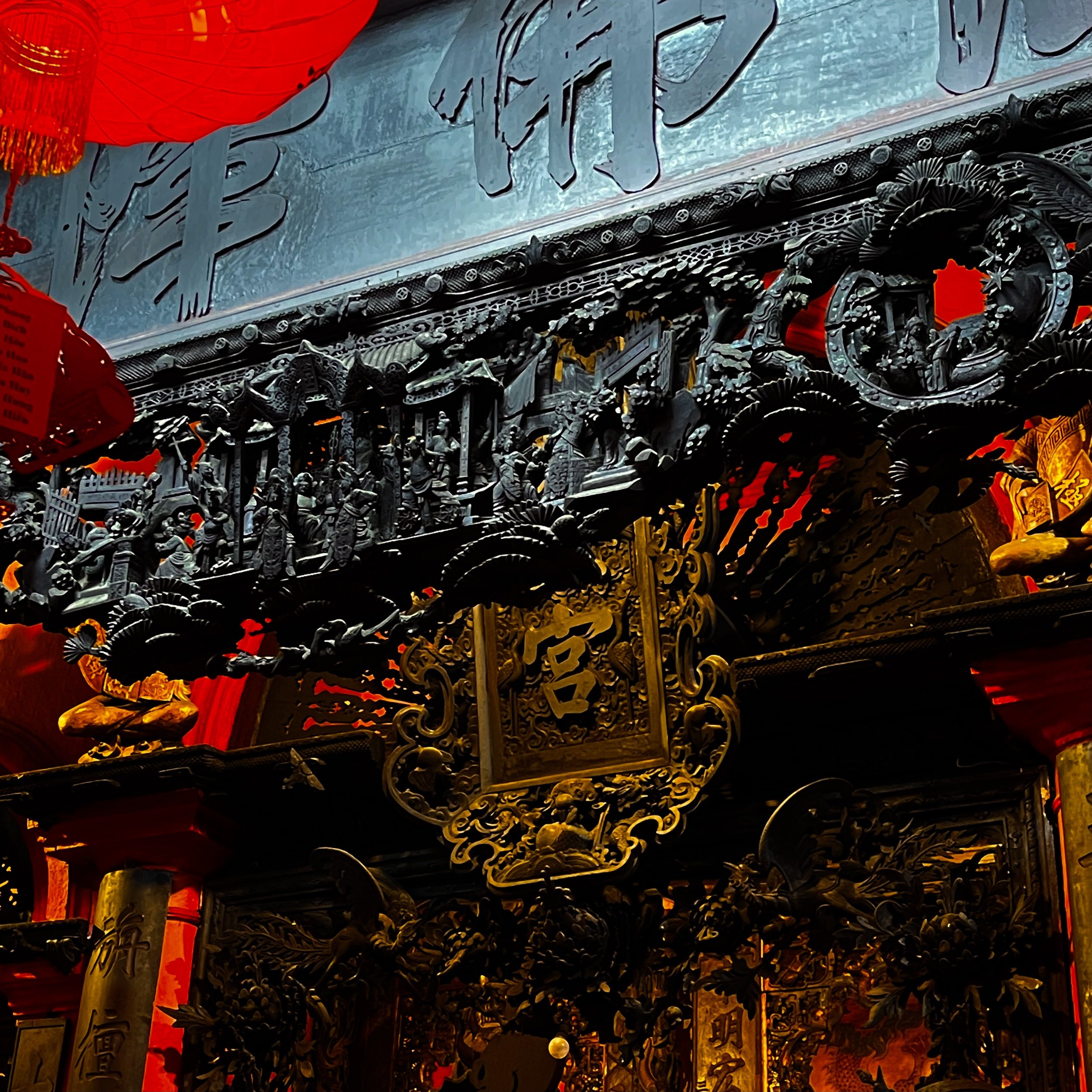Originally built in 1887 by immigrants from Guangzhou and Zhaoqing, this assembly hall was partially destroyed by fire in 1920 but rebuilt totally by 1922. It is particularly notable for the enameled porcelain figurines, made from Cay Mai pottery and products of Thach Loan - My Ngoc glazed ceramics.
Thien Hau Thanh Mau is the central goddess here; on either side are Kim Hoa Niang (Kim Hoa Thanh Mau) and Long Mau Nun. Many other gods are worshipped here, including Bac De (Chon Vo), Van Xuong De Quan , Quan Am Bodhisattva , Ngoc Hoang , Quan Thanh De Quan , Tai Bach Tinh Quan , and Cuu Thien Huyen Nu.
If you wish to witness a religious holiday here, there are ceremonies on January 1st, 9th and the lunar new year; March 23rd, April 17th, May 8th, June 24th and July 22nd.



























































